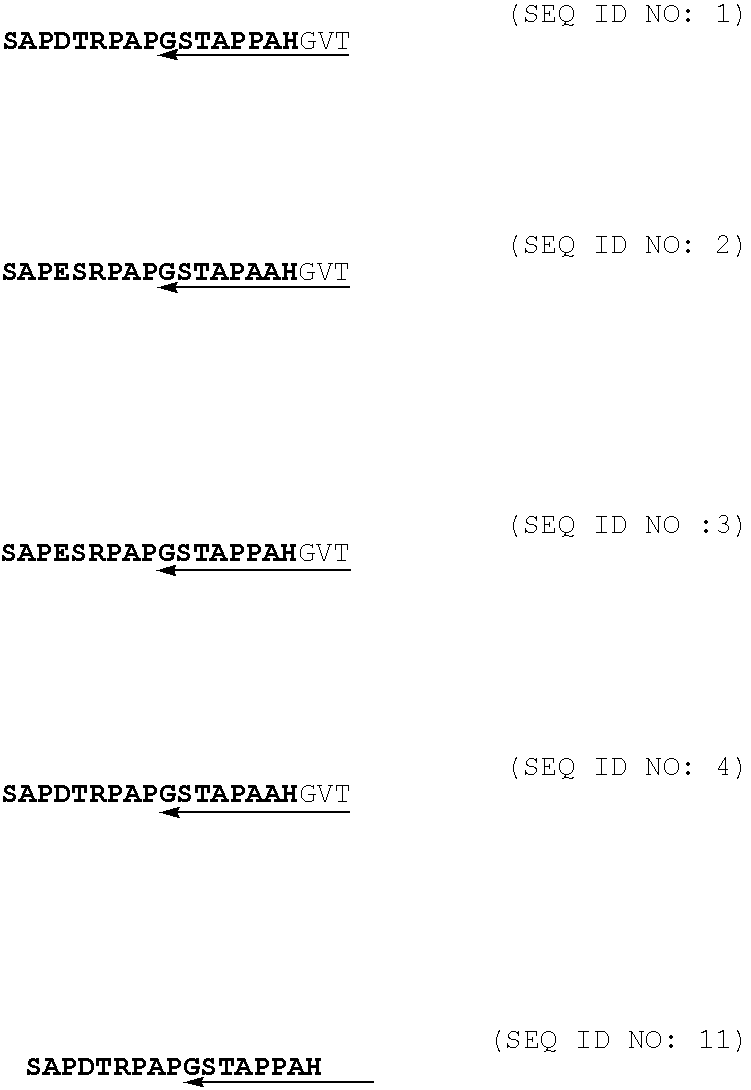Immunogenic muc1 glycopeptides
a glycopeptide and immunogenic technology, applied in the field of muc1 peptides, can solve the problems of lack of structural requirements for designing immunogenic muc1 peptides, lack of evidence for glycosylated antigen processing and presentation,
- Summary
- Abstract
- Description
- Claims
- Application Information
AI Technical Summary
Benefits of technology
Problems solved by technology
Method used
Image
Examples
example 1
Processing of MUC1 by Human Dendritic Cells is Site-Specific
Isolation and Cultivation of Dendritic Cells
[0097] Peripheral blood mononuclear cells (PBMCs) from healthy donors were obtained by leukapheresis followed by Ficoll-density centrifugation. CD14+ cells were positively selected using CD14-Microbeads and MACS separation (Miltenyi Biotech, Bergisch Gladbach, Germany) and subsequently cultured for 8 days in CellGro Medium (Cellgenix, Freiburg, Germany) supplemented with 800 U / ml of granulocyte-macrophage colony-stimulating factor (GM-CSF; Sandoz, Basel, Switzerland) and 500 IU / ml of IL-4 (CellGenix) at 37° C. and 5% CO2. GM-CSF and IL-4 were replenished on days 3 and 5 of culture.
[0098] Immortalized dendritic cells (clone D2.4) from C57BL / 6 mice were grown in DMEM supplemented with 10% FCS, L-glutamine, 0.1% 2-mercaptoethanol, and antibiotics at 37° C. and 5% CO2 (Shen et al., J. Immunol. 158 (1997), 2723-2730).
MUC1 Glycoforms
[0099] Native MUC1 glycoforms were isolated fro...
example 2
Site-Specific Processing of MUC1 by Mouse Dendritic Cells is Controlled by O-Linked Glycans
Preparation of Bead-Coated Antigen
[0111] In some experiments, in which mature mouse DCs were pulsed, a selected panel of glycopeptides was non-covalently conjugated to antibody-coated beads. Glycopeptides H1 to H6 (100 μg each) were used unmodified or biotinylated with [2-(biotinamido) ethylamido]-3,3′-dithiopropionic acid N-hydroxysuccinimide ester (Sigma, München, Germany; 100 mM in DMSO, 100 μl) at 50° C. over a period of 48 h. After evaporation of the solvent by vacuum centrifugation the biotinylated products were separated from non-tagged glycopeptides and excessive reagent by reversed-phase chromatography on a PLRP-S column (Polymer Laboratories, Shropshire, UK). Anti-MUC1 dynabeads were prepared by covalent coupling of 50 μg B27.29 monoclonal antibody (Biomira, Edmonton, Canada) to tosyl-activated M-280 beads (Dynal, Hamburg, Germany) in 0.1 M borate buffer, pH 9.5 (200 μl) for 48 h ...
example 3
In Vitro Proteolysis of Native MUC1 and MUC1 Glycopeptides with Human Cathepsin L Coincides with Cellular Processing
In Vitro Proteolysis of Native MUC1 and MUC1 (Glyco)Peptides with Human Cathepsins
[0116] Human cathepsins L and D were purchased from Sigma (München, Germany) and solubilized in 0.1 M sodium acetate buffer, pH 5.5, containing 1 mM EDTA (cathepsin D) and 1 mM dithiotreitol (cathepsin L). 2-5 units of enzyme(s) were added to 100 μg of mucin or recombinant fusion protein or to 10 μg of (glyco)peptide substrates in a total volume of 20 μl digestion buffer (see above). The reaction mixtures were incubated at 37° C. and 2 μl were withdrawn after 3 h or 24 h and diluted 20 fold in 0.1% aqueous TFA prior to MALDI mass spectrometry. In case of native MUC1 samples with complex O-glycosylation (MUC1 from tumor ascites, HMFG-MUC1, partially deglycosylated HMFG-MUC1, and MFP6 fusion protein) the digest was desalted by solid-phase extraction (ZipTip C18) and the (glyco)peptides w...
PUM
| Property | Measurement | Unit |
|---|---|---|
| mass | aaaaa | aaaaa |
| pH | aaaaa | aaaaa |
| reaction time | aaaaa | aaaaa |
Abstract
Description
Claims
Application Information
 Login to View More
Login to View More - R&D
- Intellectual Property
- Life Sciences
- Materials
- Tech Scout
- Unparalleled Data Quality
- Higher Quality Content
- 60% Fewer Hallucinations
Browse by: Latest US Patents, China's latest patents, Technical Efficacy Thesaurus, Application Domain, Technology Topic, Popular Technical Reports.
© 2025 PatSnap. All rights reserved.Legal|Privacy policy|Modern Slavery Act Transparency Statement|Sitemap|About US| Contact US: help@patsnap.com



